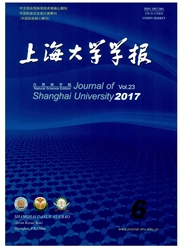

 中文摘要:
中文摘要:
目的针对陶瓷人工髋关节置换术后患者出现的临床异响问题,探究异响产生的机制。方法建立全骨盆-陶瓷人工髋关节假体-股骨系统的有限元模型,对其进行摩擦耦合下的复特征值分析,研究其在摩擦力作用下的动态响应;分析假体组件的振动特性,并通过对比组件和系统的模态振型,探究引起异响产生的振源。结果随着摩擦系数的增加,假体系统发生了模态耦合,并产生了不稳定模态。不稳定模态振型主要表现为股骨组件的弯曲和扭转振动,同时在股骨组件的模态分析结果中存在频率与振型都与之相近的模态。另外,频率为1250 Hz、2400 Hz和3930 Hz左右的不稳定模态具有较大的负模态阻尼比。股骨组件在不稳定模态频率1250 Hz和2400 Hz左右的弯曲共振和3930 Hz左右的扭转共振是假体系统自激振动的振源。结论模态耦合是摩擦引起假体系统自激振动的可能机制。骨盆也参与了噪声的辐射,同时也是假体系统产生不稳定模态的因素之一。
 英文摘要:
英文摘要:
Objective Aiming at solving the problem of clinical squeaking,the mechanism of clinical squeaking in ceramic-on-ceramic total hip arthoplasty( THA) is explored. Methods A finite element model containing human pelvis,ceramic hip endoprosthesis and a femur is established. Dynamic responses of the system under friction are recorded by the complex eigenvalue method. Then the cause of squeaking is investigated by comparing the vibration characteristics of the components. Results Increase in friction coefficient leads to mode couplings and gives rise to unstable modes of the prosthesis system. The bending and torsional vibration of the femoral component mainly contributes to the unstable mode shapes of the system.Similar mode shapes are found in modal analysis of the femoral component,and the corresponding frequencies are similar as well. In addition,the unstable modes at frequency of about 1250 Hz,2400 Hz and 3930 Hz have larger damping ratio. The femoral component reveals two bending resonances around the unstable modal frequency of 1250 Hz and 2400 Hz,and a torsional resonance around unstable modal frequency of 3930 Hz, which are the sources of the self-excited vibration of the ceramic hip endoprosthesis system. Conclusions Mode coupling maybe the candidate mechanism of self-excited oscillation of the prosthesis system. Pelvis is involved in the noise emitting and causes unstable modes of the system as well.
 同期刊论文项目
同期刊论文项目
 同项目期刊论文
同项目期刊论文
 Titanium Dioxide Nano Film Encapsulation for Metal Orthopedic Implants in Diathermy Rehabilitation T
Titanium Dioxide Nano Film Encapsulation for Metal Orthopedic Implants in Diathermy Rehabilitation T 期刊信息
期刊信息
